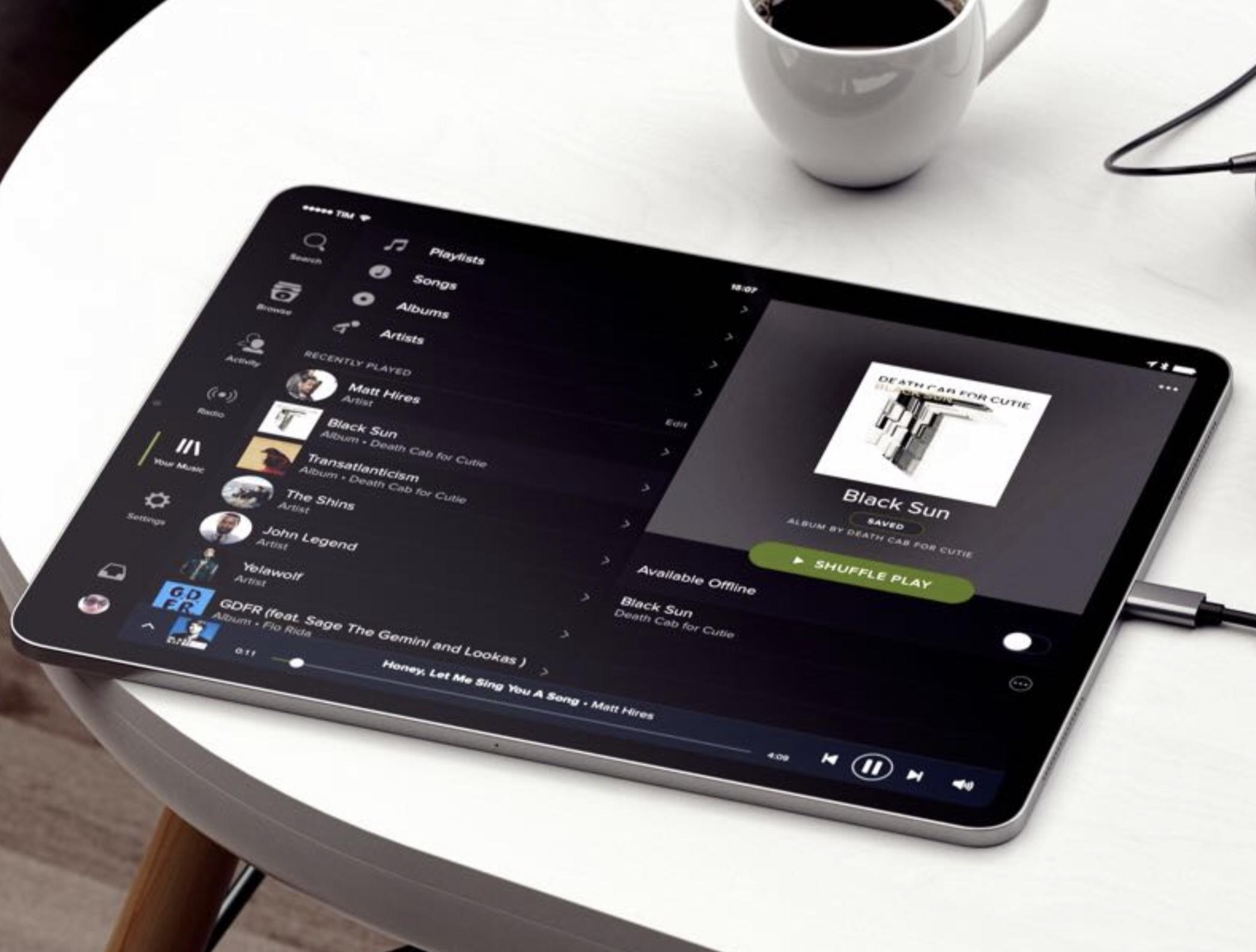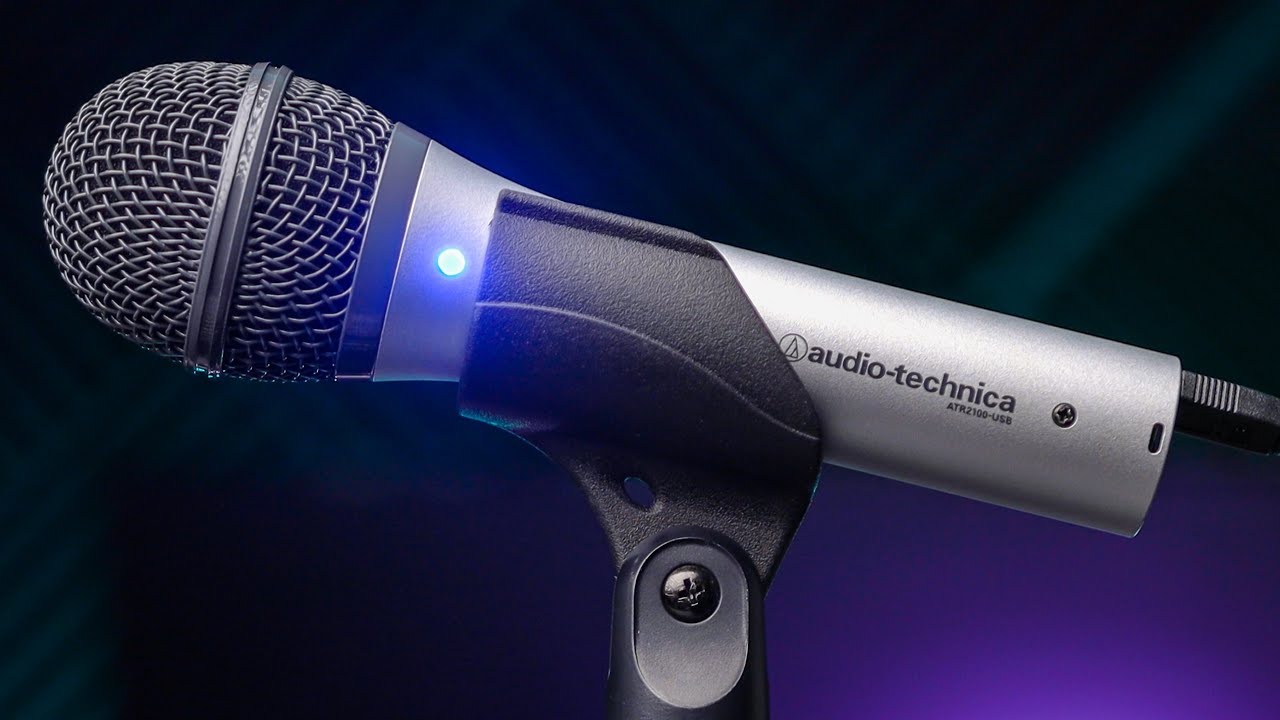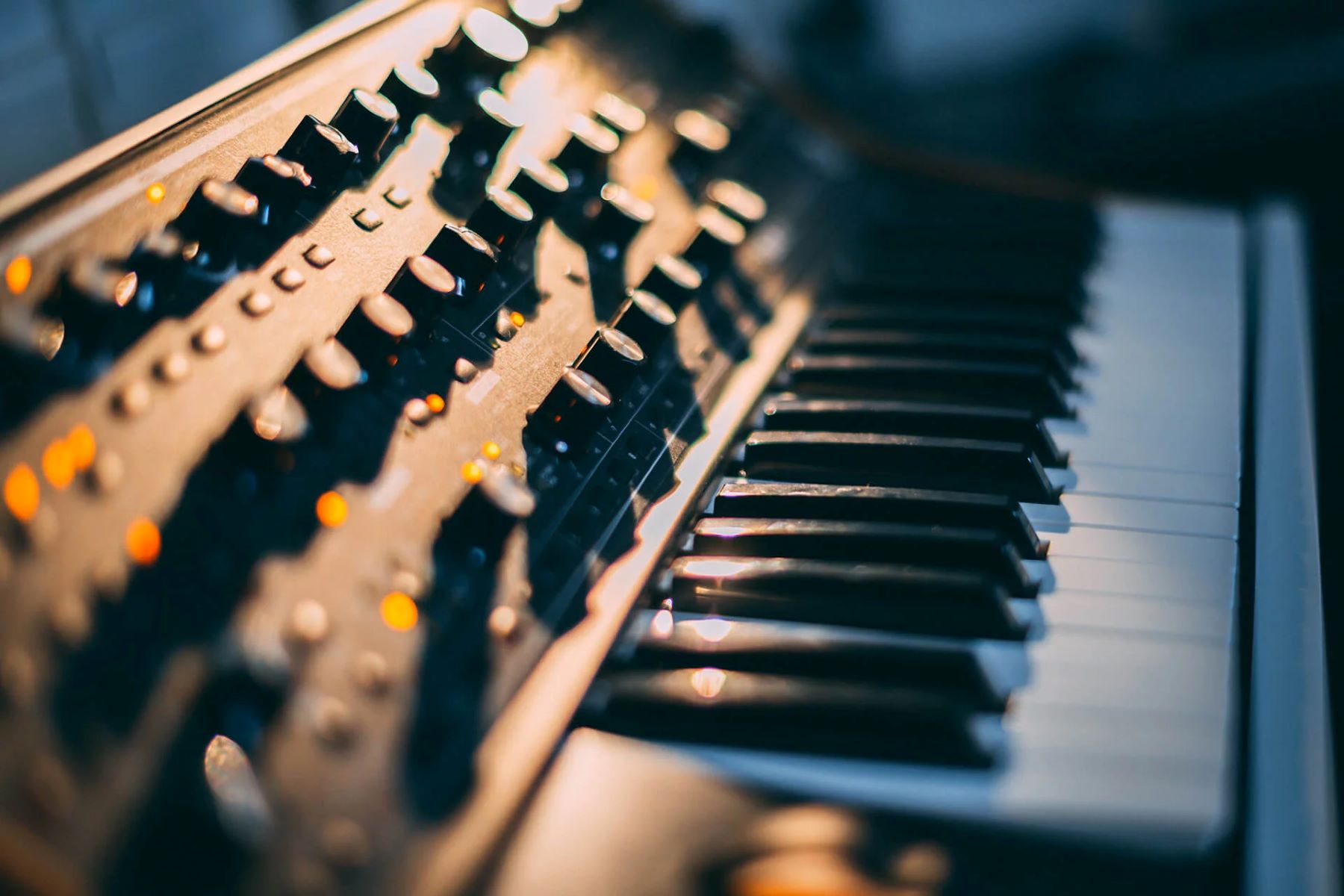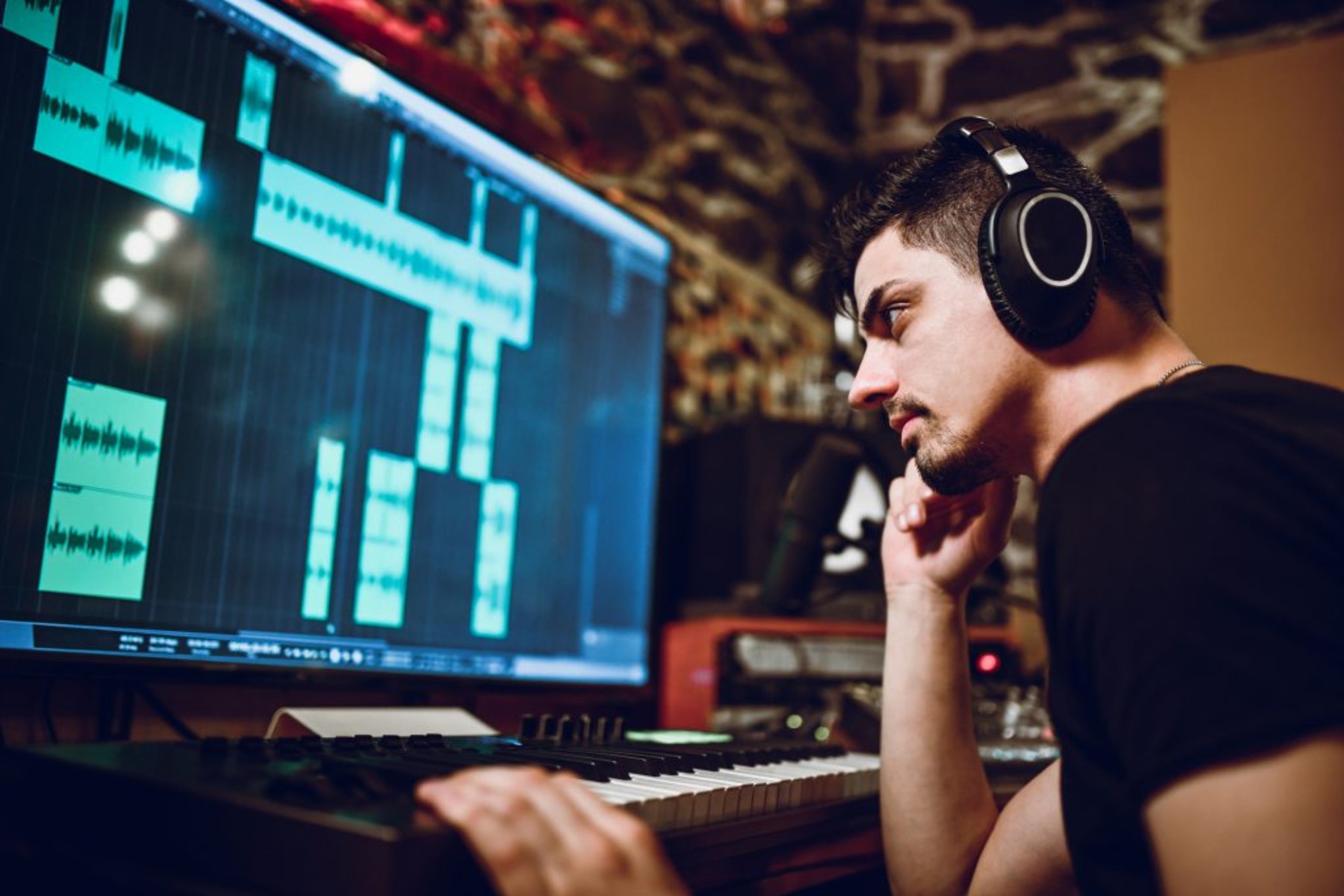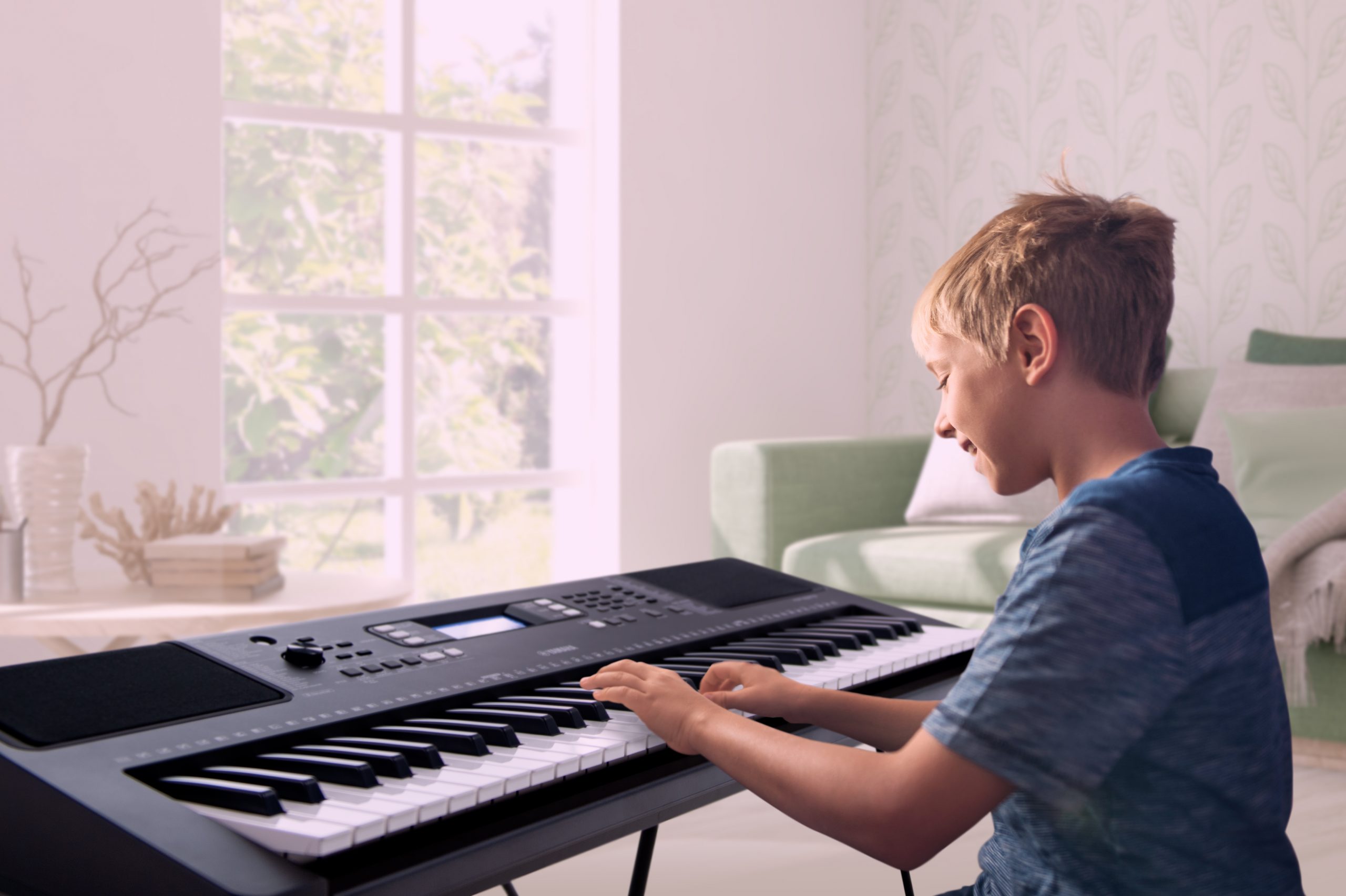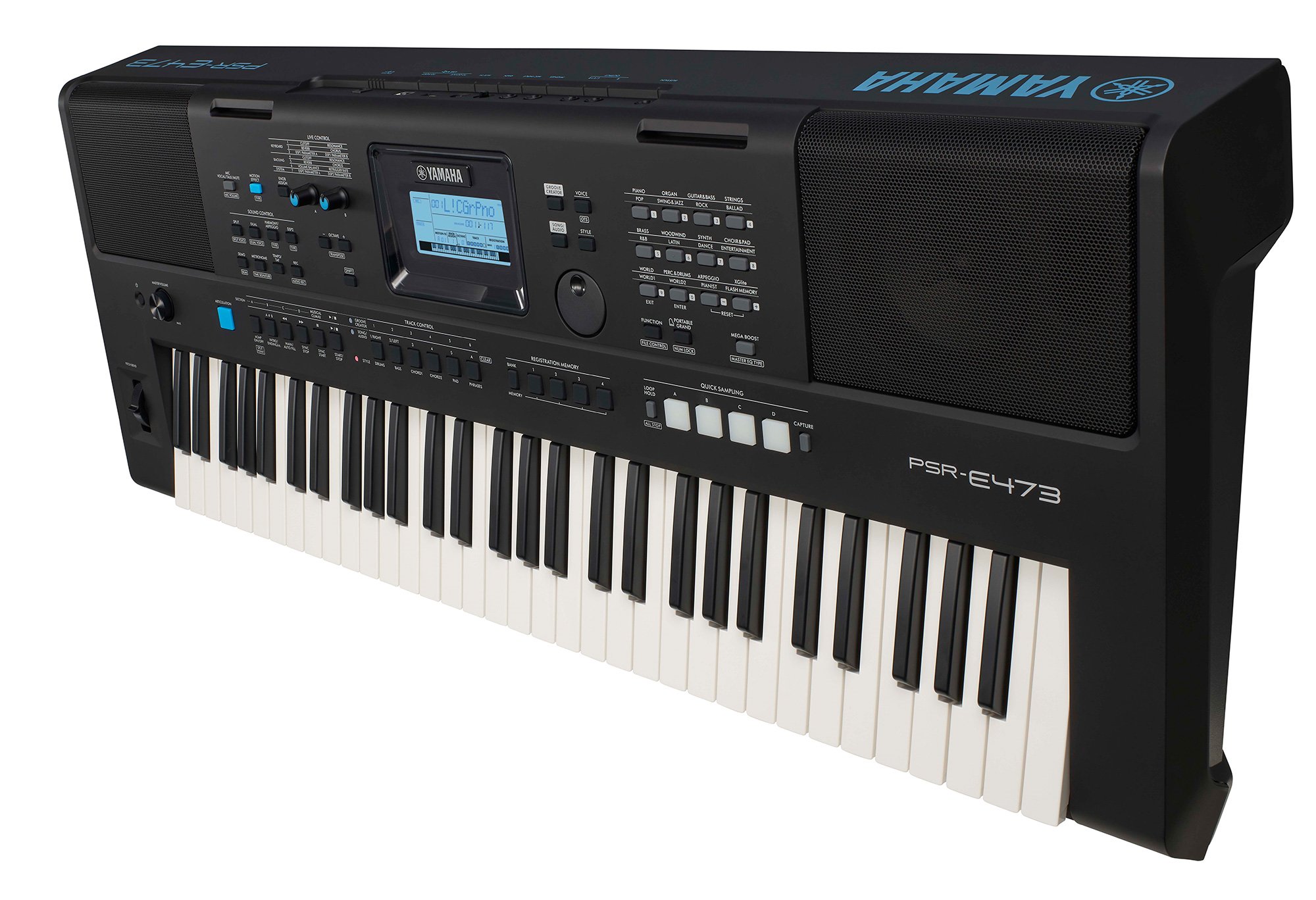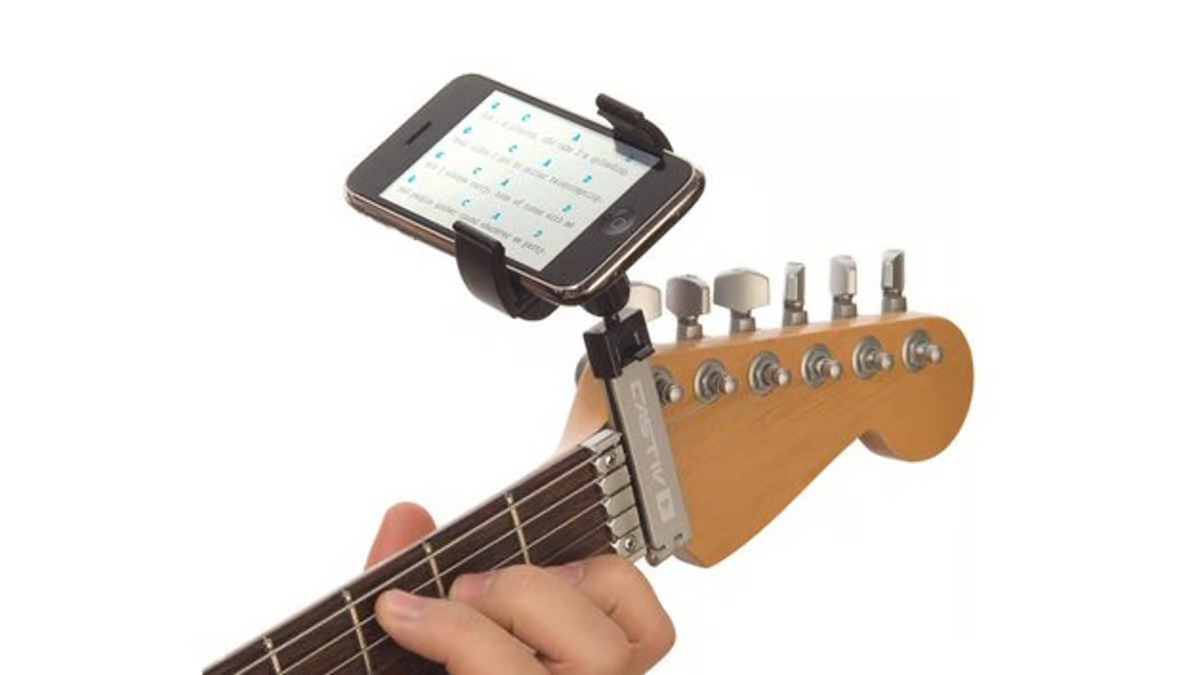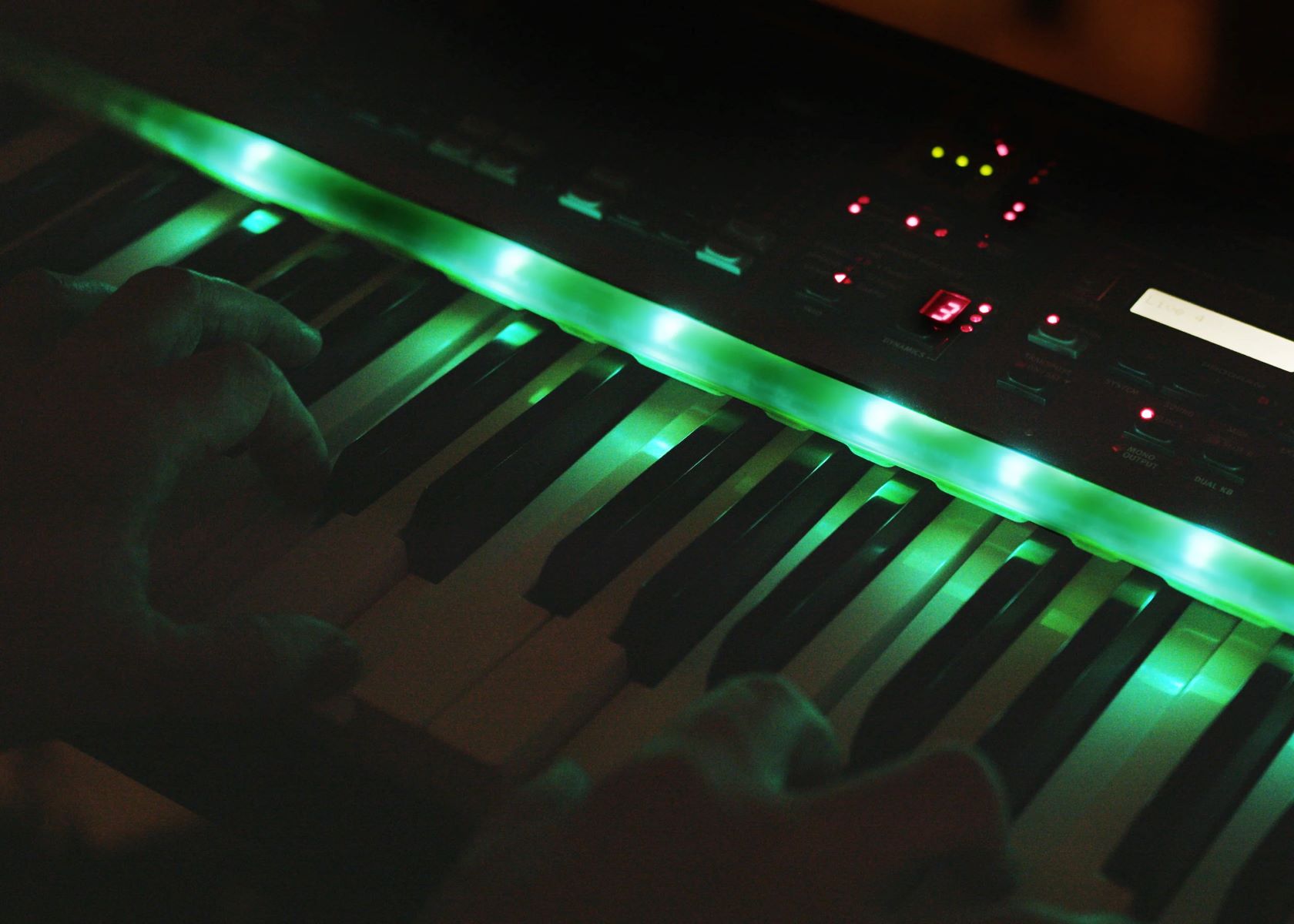Introduction
Choosing the best tablet for musicians can significantly enhance their music production, recording, and performance experience. With the advancement of technology, tablets have become powerful tools that offer a wide range of features and applications specifically designed for musicians.
In this modern era, where musicians rely heavily on digital tools for composing, editing, and performing music, a tablet can serve as a portable studio, replacing the need for bulky equipment. The right tablet can provide musicians with the flexibility to create music on the go, access a myriad of music apps, and collaborate with other artists.
However, with the multitude of tablets available on the market, choosing the perfect one can be a daunting task. Each tablet comes with its own set of features, specifications, and price points. It’s essential to consider certain factors to ensure that the tablet meets the unique needs of musicians.
In this article, we will explore the key factors to consider when choosing a tablet for musicians. We will delve into aspects such as operating system, screen size and display quality, processing power and storage, audio capabilities, connectivity options, compatibility with music apps and software, portability and battery life, as well as price range. By taking these factors into account, musicians can make an informed decision and find the tablet that best suits their musical needs.
Factors to Consider When Choosing a Tablet for Musicians
When selecting a tablet for musicians, it’s important to consider several key factors that can impact the overall music production and performance experience. Let’s take a closer look at these factors:
- Operating System: The operating system of a tablet plays a crucial role in determining its compatibility with music apps and software. iOS devices such as iPads are popular amongst musicians due to their extensive library of music apps, while Android tablets offer a wide range of customization options.
- Screen Size and Display Quality: A tablet with a larger screen allows for better visibility and easier navigation, especially when working with complex music production software. High-resolution displays ensure that musicians can view intricate details and make accurate adjustments to their compositions.
- Processing Power and Storage: A powerful processor and ample storage are essential for running music production software smoothly. Musicians should ensure that the tablet has enough processing power to handle the demands of their music apps and enough storage to store their audio files.
- Audio Capabilities: Musicians rely on high-quality audio output for accurate monitoring and playback. Tablets with built-in stereo speakers or the option to connect external speakers or headphones are preferable. Look for tablets with enhanced audio features, such as support for high-resolution audio formats and immersive sound technologies.
- Connectivity Options: The tablet’s connectivity options are important, as they determine how musicians can connect external devices or transfer their music files. USB ports, Bluetooth connectivity, and compatibility with MIDI devices are desirable features for seamless integration with other hardware.
- Compatibility with Music Apps and Software: Ensure that the tablet is compatible with the music apps and software you use. Check if the tablet supports popular digital audio workstations (DAWs), virtual instruments, and MIDI controllers. This ensures that the tablet can seamlessly integrate with your existing music production setup.
- Portability and Battery Life: Musicians who frequently travel or perform live need a tablet that is lightweight and has a long battery life. This ensures that they can work on their music projects or perform without interruption, even in environments where power sources may be limited.
- Price Range: Set a budget and consider the tablet’s price in relation to its features and capabilities. While high-end tablets may offer advanced features, there are often more affordable options that can still meet the needs of musicians.
- User Reviews and Recommendations: Take the time to read user reviews and seek recommendations from fellow musicians or industry professionals. Real-world experiences can provide valuable insights into the performance, durability, and usability of the tablet.
By carefully considering these factors, musicians can select the perfect tablet that meets their specific needs and complements their musical journey. Now, let’s explore some of the top tablets for musicians in the market today.
Operating System
The choice of operating system is a crucial factor when selecting a tablet for musicians. There are two major operating systems to consider: iOS and Android.
iOS, found exclusively on Apple’s iPads, offers a seamless and intuitive user experience. iPads are known for their exceptional performance, reliability, and optimized software integration. The App Store boasts an extensive collection of music apps and software, making iPads a popular choice among musicians. With the availability of professional-grade music production apps like GarageBand and Auria Pro, iOS tablets provide a robust platform for creating and editing music on the go.
On the other hand, Android tablets offer a wider range of options in terms of budget, screen sizes, and customization. Musicians who prefer more flexibility and versatility may find Android tablets appealing. The Google Play Store features numerous music apps and software, allowing musicians to explore different tools and workflows. Additionally, some Android tablets support expandable storage, allowing musicians to keep their extensive music libraries and samples at their fingertips.
When considering the operating system, it’s important to evaluate the compatibility of your music apps and software. Some applications may be available exclusively on one operating system, while others may have versions for both iOS and Android. Consider the specific apps and software you rely on for your music production and ensure that they are available and fully supported on the chosen operating system.
Ultimately, the decision between iOS and Android boils down to personal preference. iOS tablets tend to offer a more polished and user-friendly experience, while Android tablets provide greater customization options and affordability. It’s recommended to try out both operating systems and explore their respective app ecosystems to determine which one aligns better with your musical needs and preferences.
Now, let’s move on to the next factor to consider when choosing a tablet for musicians: screen size and display quality.
Screen Size and Display Quality
The screen size and display quality of a tablet are vital considerations for musicians. A larger screen provides more workspace and makes it easier to navigate music apps and software. It is especially important for tasks that require precise control, such as editing MIDI tracks or adjusting virtual instrument parameters.
Typically, tablets come in various screen sizes, ranging from 7 inches to over 12 inches. A larger screen, such as the 10.2-inch display on the iPad or the 12.9-inch display on the iPad Pro, offers more real estate for multi-track editing, waveform visualization, and mixing. This can enhance productivity and improve the overall experience of working with music apps.
Another aspect to consider is the display quality. A high-resolution display ensures that musicians can view intricate details and accurately assess their music projects. Look for tablets with at least Full HD resolution (1920 x 1080) or higher, as this provides sharp and clear visuals. Some tablets, like the iPad Pro, offer even higher resolutions like Liquid Retina XDR display, offering stunning color accuracy and HDR capabilities.
In addition to resolution, pay attention to other display features, such as color accuracy and brightness. A tablet with accurate colors ensures that the visuals displayed on the screen are faithful to the original content, which is essential for tasks like color-coded MIDI editing. Moreover, a tablet with a bright display allows for easy readability even in well-lit environments, such as outdoor performances or studio setups with ample lighting.
It’s worth considering whether a tablet offers additional display enhancements, such as ProMotion technology on certain iPad models. ProMotion enables a high refresh rate display, up to 120Hz, resulting in smoother motion and more responsive touch interactions. This can be advantageous for tasks that require precise touch input, such as playing virtual instruments or triggering samples.
Ultimately, the ideal screen size and display quality depend on your specific needs and preferences. Consider the tasks you’ll be performing on the tablet and how important a large workspace and high-quality visuals are to your workflow. By choosing a tablet with an appropriate screen size and display quality, you can ensure a comfortable and visually immersive music production and performance experience.
Now, let’s move on to the next factor: processing power and storage capacity.
Processing Power and Storage
When it comes to choosing a tablet for musicians, processing power and storage capacity are crucial considerations. A tablet with sufficient processing power ensures smooth performance when running music production apps, virtual instruments, and digital audio workstations (DAWs).
The processing power of a tablet is determined by its CPU (Central Processing Unit). Look for tablets with powerful processors that can handle the demands of resource-intensive music apps and software. For iOS tablets, the newer iPad Pro models feature Apple’s M1 chip, offering exceptional performance and efficiency. On the Android side, tablets with processors like Qualcomm Snapdragon or Samsung Exynos offer solid performance.
In addition to processing power, sufficient storage capacity is essential for storing music files, samples, and project files. Consider the size of your music library and the storage requirements of your music production workflow. Tablets come with varying storage options, ranging from 32GB to 1TB or more.
For musicians who work extensively with sample libraries or large audio files, a tablet with ample built-in storage or expandable storage options (via microSD card slots) is advantageous. This allows for easy access to your entire library without constantly relying on cloud storage or external storage devices.
Another factor to consider is RAM (Random Access Memory), which affects a tablet’s ability to multitask and handle multiple applications simultaneously. Higher RAM capacities, such as 4GB or 8GB, enable smoother multitasking and better performance when working with memory-intensive tasks like audio recording and simultaneous playback.
It’s important to strike a balance between processing power and storage capacity based on your specific music production needs. If you primarily use cloud storage or streaming services for music files, you may be able to opt for a tablet with less internal storage. However, if you require offline access to a large library or work with high-resolution audio files, prioritizing storage capacity becomes crucial.
Considering both processing power and storage capacity in tandem ensures that your tablet can handle the demands of music production without performance bottlenecks or storage limitations. Now, let’s explore the next factor to consider: audio capabilities.
Audio Capabilities
When choosing a tablet for musicians, it’s essential to evaluate the audio capabilities of the device. Musicians rely on high-quality audio output for accurate monitoring, playback, and recording.
One important consideration is the tablet’s built-in speakers. Tablets with stereo speakers provide a wider soundstage, allowing musicians to better perceive the stereo imaging of their music. Look for tablets that offer immersive and clear audio output, as this enhances the overall listening experience.
For musicians who prefer using headphones or external speakers, it’s important to ensure that the tablet supports audio output through a 3.5mm headphone jack or Bluetooth connectivity. This allows for seamless integration with a variety of audio devices, giving musicians the flexibility to choose their preferred listening setup.
Moreover, tablets that support high-resolution audio formats, such as FLAC or DSD, offer superior sound quality and fidelity. This is especially beneficial for musicians who work with high-quality audio files or those who require accurate monitoring capabilities.
Some tablets may feature advanced audio technologies to enhance the sound output. For example, certain models may have Dolby Atmos or similar audio-enhancing technologies that create a more immersive and realistic listening experience.
Additionally, consider the tablet’s audio input capabilities. Some tablets offer a dedicated audio input port, such as a 3.5mm audio-in jack or USB-C compatible ports, allowing for direct recording of instruments or connecting external microphones for capturing vocals or live performances.
For musicians who utilize MIDI controllers or other external musical instruments, support for MIDI connectivity is crucial. Some tablets offer USB or Bluetooth MIDI support, enabling seamless integration with MIDI controllers, keyboards, and drum pads.
By considering the audio capabilities of a tablet, musicians can ensure an optimal audio experience during music playback, monitoring, and recording. Whether it’s through superior built-in speakers, compatibility with external audio devices, support for high-resolution audio formats, or MIDI connectivity, the tablet’s audio capabilities play a significant role in enhancing the overall music production and performance experience.
Now, let’s move on to the next factor: connectivity options.
Connectivity Options
Connectivity options are an important consideration when choosing a tablet for musicians. The ability to connect to external devices and transfer music files seamlessly can greatly enhance the versatility and functionality of the tablet.
One essential connectivity option to look for is USB support. Tablets that feature USB ports, such as USB-C or USB-A, allow for direct connection with a wide range of external devices. This includes MIDI controllers, audio interfaces, external hard drives, and more. USB connectivity provides a convenient way to expand the tablet’s capabilities and integrate it into a comprehensive music production setup.
Bluetooth connectivity is another key feature to consider. Bluetooth allows for wireless connection with various devices, such as headphones, speakers, MIDI controllers, and MIDI keyboards. This eliminates the need for cables and offers greater mobility during music production or live performances.
Additionally, tablets with Wi-Fi connectivity enable access to online resources, such as cloud storage, streaming services, and music collaboration platforms. This allows musicians to easily share their music files, collaborate with other artists, and access a wealth of online music resources and tutorials.
Some tablets may also offer NFC (Near Field Communication) capabilities. NFC allows for quick and easy pairing with compatible devices, such as Bluetooth headphones or speakers, simply by bringing them in close proximity to the tablet. This can be a convenient feature for musicians who frequently switch between multiple audio devices.
It’s also worth considering if the tablet supports SIM card slots or eSIM capabilities. This allows for mobile data connectivity, enabling musicians to access online resources even without a Wi-Fi connection. It can be particularly useful for musicians who frequently travel or perform in areas where Wi-Fi access is limited.
When evaluating connectivity options, it’s essential to ensure that the tablet supports the specific requirements of your music production setup. Consider the devices and peripherals you use regularly and ensure that the tablet offers the necessary connectivity options to seamlessly integrate them into your workflow.
Now that we’ve explored connectivity options, let’s move on to the next factor to consider: compatibility with music apps and software.
Compatibility with Music Apps and Software
Compatibility with music apps and software is a crucial factor when selecting a tablet for musicians. The tablet should be able to run your preferred music apps and software seamlessly, ensuring a smooth and efficient music production experience.
Before making a purchase, verify if the tablet supports the apps and software you rely on for your music production. Check the operating system requirements of your preferred applications and ensure that they are compatible with the chosen tablet. Many music apps are available for both iOS and Android, but some may be exclusive to one platform.
In addition to compatibility, it’s important to consider the performance of the tablet when running music apps and software. Some music apps and virtual instruments have higher system requirements, and they may require more processing power and RAM to perform optimally. Review the recommended specifications for your preferred apps and ensure that the tablet meets or exceeds those requirements.
Another aspect to consider is the availability of specialized music production software and digital audio workstations (DAWs) for the chosen tablet. Some tablets, such as iPads, have a dedicated selection of music production apps and software in their respective app stores. These apps offer features specifically designed for musicians, including MIDI sequencing, virtual instruments, audio recording, and mixing capabilities.
Furthermore, compatibility with MIDI controllers and other external hardware is important for many musicians. Ensure that the tablet can easily integrate with your MIDI devices, either through USB or Bluetooth connectivity. Being able to control your music apps and software through a MIDI controller enhances the hands-on experience and workflow efficiency.
Consider the specific music production tasks you’ll be performing and ensure that the tablet, along with the available music apps and software, can support those tasks effectively. Whether you’re composing, recording, mixing, or performing live, having compatible and feature-rich apps enhances your creative possibilities and streamlines your workflow.
By choosing a tablet that is compatible with your preferred music apps and software, you can ensure a seamless and productive music production experience.
Now, let’s explore the next factor to consider: portability and battery life.
Portability and Battery Life
Portability and battery life are essential considerations when choosing a tablet for musicians. Musicians who are constantly on the go or perform live need a tablet that is lightweight, compact, and offers extended battery life.
Portability is particularly important for musicians who travel frequently or need to work in different locations. A lightweight and slim tablet makes it easier to carry around, whether it’s for composing on the road, collaborating with other musicians, or performing live. Consider the tablet’s dimensions and weight to ensure it meets your mobility needs.
Furthermore, assessing the tablet’s build quality and durability is crucial. Opt for a tablet made from high-quality materials that can withstand the demands of regular usage and transport. Look for tablets that have a solid construction and are designed to withstand the rigors of being on the road or traveling.
Battery life is another critical aspect for musicians who use their tablets for extended periods without access to a power source. Tablets with long battery life ensure uninterrupted music production sessions or performances. Look for tablets that offer at least 8-10 hours of battery life under normal usage conditions.
Consider the specific power requirements of your music apps and software when evaluating battery life. Some music production apps are more resource-intensive and can drain the battery quickly. It may be worth investing in a tablet with extended battery life if you anticipate lengthy music production sessions or performances.
Moreover, it’s beneficial to choose a tablet that supports fast charging. Fast charging technology allows you to quickly recharge the tablet’s battery, minimizing downtime and ensuring that you’re ready to work or perform when needed.
In addition to these factors, it’s worth considering the tablet’s storage and transportation options. Look for tablets that come with protective cases or covers, as they can provide added durability and safeguard the tablet from accidental bumps or drops. Some tablets also offer accessories like keyboard attachments for increased productivity and ease of use.
By selecting a portable and long-lasting tablet, musicians can work or perform wherever their musical journey takes them, without being limited by battery life or the bulkiness of their equipment.
Now that we’ve explored portability and battery life, let’s move on to the next factor: price range.
Price Range
Price range is an important factor to consider when choosing a tablet for musicians. Tablets come in a wide range of prices, so it’s essential to set a budget and find a tablet that offers the best value for your investment.
High-end tablets, such as the iPad Pro or high-spec Android tablets, offer advanced features and premium build quality. They often come with powerful processors, high-resolution displays, ample storage, and enhanced audio capabilities. These tablets are ideal for professional musicians or those who require top-of-the-line performance and features. However, they typically come with a higher price tag.
On the other hand, there are more affordable mid-range tablets that can still meet the needs of musicians. These tablets may offer a balance between performance, storage capacity, and price. While they may not have all the advanced features found in high-end tablets, they can still provide a satisfactory music production experience.
Consider your specific music production requirements and prioritize the features that are most important to you. This will help you determine the range of tablets that fit your budget while still meeting your needs.
It’s also worth noting that prices can vary based on factors such as screen size, storage capacity, and connectivity options. Larger tablets with higher storage capacities and additional connectivity features may cost more than smaller, more basic models.
As you evaluate tablets within your price range, be sure to read reviews and compare the specifications and features offered by different models. This will help you make an informed decision and find the best tablet that offers the most value for your budget.
Remember, the goal is to find a tablet that meets your specific music production needs without breaking the bank. By carefully considering the price range and features, you can strike a balance between performance and affordability.
Now, let’s explore the next factor: user reviews and recommendations.
User Reviews and Recommendations
When looking for the best tablet for musicians, it’s beneficial to consider user reviews and seek recommendations from fellow musicians or industry professionals. Real-world experiences and insights can provide valuable information about the performance, durability, and usability of different tablets.
Take the time to read user reviews on reputable websites or forums dedicated to music production or technology. Pay attention to common themes in the reviews, such as performance, battery life, display quality, and audio capabilities. Look for tablets that consistently receive positive feedback from users, as this indicates a higher likelihood of satisfaction.
Additionally, reach out to musicians in your network or online communities to seek recommendations. Ask about their experiences with specific tablets, inquire about any issues they may have encountered, and learn about the pros and cons of different models. Their firsthand knowledge can provide valuable insights and help you make a more informed decision.
It’s worth considering the preferences and specific needs of musicians who provide recommendations. Different musicians may prioritize different features based on their music production styles, genres, or workflows. Consider whether their usage scenarios align with your own and assess the suitability of their recommendations for your unique needs.
Furthermore, consult industry professionals or technology experts who specialize in music production. Their expertise and experience in the field can offer valuable guidance when choosing the right tablet for musicians. They may be aware of specific models or brands that have a reputation for excellence in music production or provide insights into the latest advancements in tablet technology.
While user reviews and recommendations are valuable resources, it’s important to remember that ultimately, the choice of tablet should align with your individual preferences and requirements. Use these reviews and recommendations as a guide, but also consider your own specific needs and budget as you make your final decision.
Now that we’ve explored user reviews and recommendations, it’s time to wrap up and summarize the key factors to consider when choosing a tablet for musicians.
Conclusion
Choosing the best tablet for musicians is a significant decision that can greatly impact the music production, recording, and performance experience. By considering the key factors outlined in this article, musicians can make an informed decision and find a tablet that best suits their unique needs.
The operating system plays a crucial role, with iOS and Android offering different strengths and app ecosystems. Screen size and display quality are important for visibility and navigation, especially when working with complex music production software. Processing power and storage capacity are vital to ensure smooth performance and sufficient storage for music files and apps.
Audio capabilities, including built-in speakers, headphone connectivity, and support for high-resolution audio formats, enhance the sound output and monitoring experience. Connectivity options, such as USB, Bluetooth, and Wi-Fi, enable seamless integration with external devices and online resources.
Compatibility with preferred music apps and software ensures a smooth and efficient workflow. Portability and battery life are important for musicians on the go, providing flexibility and uninterrupted music production sessions or performances. Finally, considering the tablet’s price range and user reviews and recommendations helps musicians make the best value-for-money decision.
Remember to prioritize your specific music production needs and preferences when evaluating tablets. What works for one musician may not necessarily work for another, so it’s important to find a tablet that aligns with your individual requirements and creative goals.
With careful consideration and research, finding the perfect tablet for musicians is within reach. Invest in a tablet that empowers you to unleash your creative potential, enjoy seamless music production experiences, and bring your musical vision to life.
Now that you have an understanding of the key factors to consider, you can confidently embark on your search for the best tablet for musicians. Good luck in finding the perfect tablet for your musical journey!







